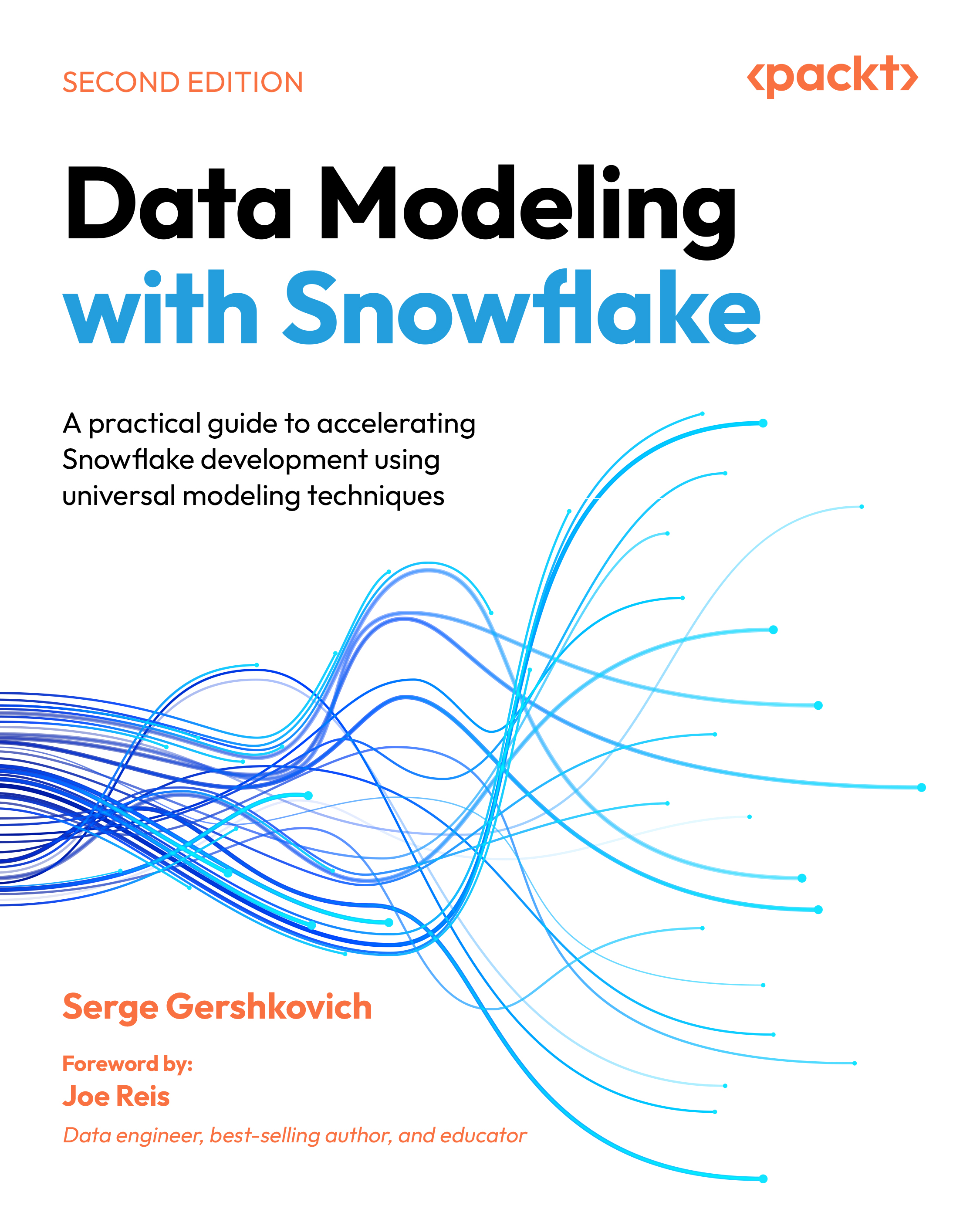Diving into data lakes
Starting in the early 2000s, the explosion of big data and web-driven workloads such as clickstream analytics, IoT, and sensor readings began to generate volumes of semi-structured data and established conventions. Structured relational datasets are simpler to model and govern, following the techniques and best practices outlined in this book. With its constantly evolving feature set, Snowflake allows users to utilize various architectures within a single interoperable platform. The key takeaway is that when transitioning to Snowflake, users are not required to choose exclusively between a lakehouse or warehouse; instead, they can benefit from both and apply elements of each where they are most appropriate and unstructured data that traditional warehouses were unprepared to handle.
The five V’s of big data
Big data refers to extremely large, diverse, and rapidly changing datasets that are difficult or impossible to process...

































































